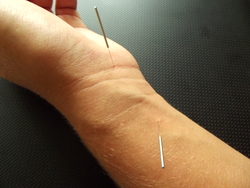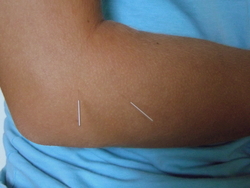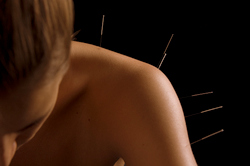
Researchers in Spain have found that individualised acupuncture treatment is effective for pain relief and improving the quality of life in patients with fibromyalgia. They randomly assigned 164 patients at three primary care centres, to receive either individualised acupuncture or sham acupuncture, once per week for ten weeks. All patients continued to take any medication they were also on for the condition. Progress was assessed at baseline, 10 weeks, 6 months and 12 months.
At the end of the initial treatment phase, those receiving individualised acupuncture reported a significant decrease (41%) in pain intensity compared with the sham group (27%). This difference persisted at the 12 month follow-up (20% versus 6%). Disease impact scores, fatigue, depression and anxiety were also all significantly better in the individualised acupuncture group at all assessment points. The researchers concluded that since the effect persisted after one year, and side effects were mild and infrequent, the use of individualised acupuncture in patients with fibromyalgia is recommended.
(Acupuncture for fibromyalgia in primary care: a randomised controlled trial. Acupuncture in Medicine, 15 February 2016.)




